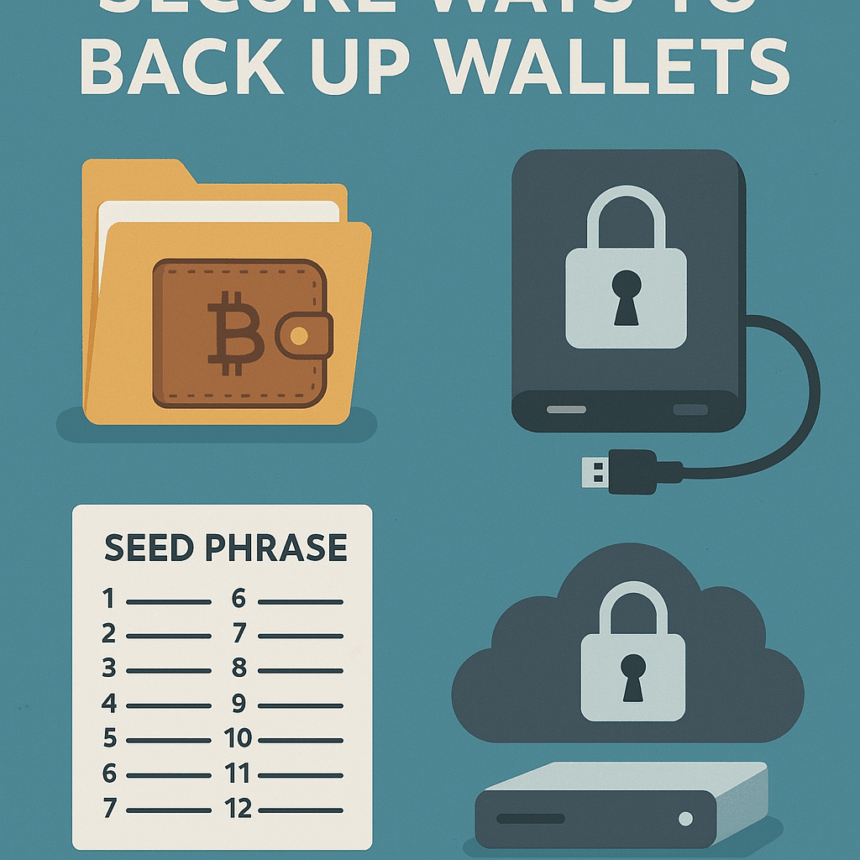In this Article i Will talk About the Secure Ways To Back Up Wallets. If your phone breaks, you lose a device, or hackers strike, the right backup lets you grab your coins and go on with your day.
The goal of this post is to show you step-by-step ways that pros and beginners alike can trust. Well talk hardware wallets, save-the-seed tricks, encrypted drives, and a few other smart moves that stand up to loss or theft.
Key Point & Secure Ways To Back Up Wallets
| Backup Method | Key Point |
|---|---|
| 1. Hardware Wallet Backup | Physically stores private keys offline, protected from online threats. |
| 2. Paper Wallet Backup | Private keys are printed on paper; completely offline but vulnerable to damage. |
| 3. Seed Phrase Backup | A 12–24 word recovery phrase used to restore wallets; must be stored securely. |
| 4. Encrypted USB Drive | Stores backup data in encrypted form on a portable USB device. |
| 5. Encrypted Cloud Storage | Backs up wallet data online with strong encryption and access control. |
| 6. Multi-signature Wallets | Requires multiple private keys to approve a transaction, reducing single-point risk. |
| 7. Shamir Secret Sharing | Splits a seed into multiple parts; only a subset is needed to recover the wallet. |
| 8. Metal Backup Plates | Fireproof and waterproof method for storing seed phrases permanently. |
| 9. Cold Storage Vaults | Professionally secured offline storage used for high-value crypto holdings. |
| 10. Secure Offline Computer Backup | Uses an air-gapped computer to store wallet data, isolated from internet threats. |
Secure Ways to Back Up Cryptocurrency Wallets
1. Hardware Wallet Backup
A hardware wallet is a small gadget that locks your private keys away where hackers can’t reach them. When you first set up the device, it spits out a backup phrase-usually 12 to 24 words that look random but are actually your lifeline.
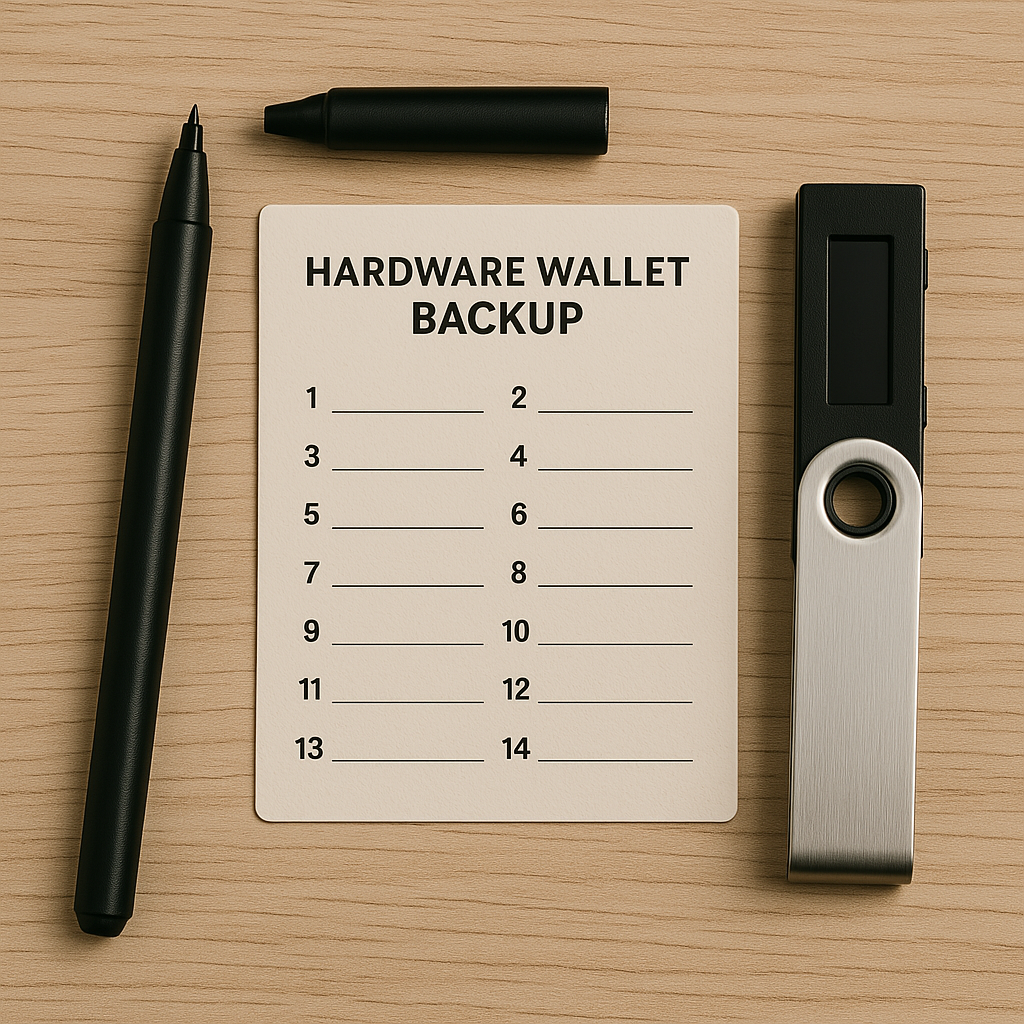
Grab a pen, write the phrase on paper, or engrave it on a metal tag so fire and water can’t ruin it. Stash the paper or tag inside a safe or a safety-deposit box.Home safes work too, just make sure they are fireproof and sturdy.
Double-check the wallet’s screen every few weeks; its maker might roll out a firmware update that patches new security holes. Never snap a photo of the phrase or save it on your phone because that puts it online in plain sight. Keep the phrase quiet; even reading it aloud could let someone overhear.
Hardware Wallet Backup
- Offline Storage: Your private key lives on a small gadget that never touches the web.
- Seed Phrase Recovery: When you first set it up, a 12- to 24-word backup phrase is printed for emergencies.
- Firmware Updates: The maker sends fixes that keep nasty bugs in check.
- Tamper-Resistant: Tough casing stops both prying fingers and shady software tricks.
- Portable: Slide the device into a pocket or tuck it inside a fireproof box.
2. Paper Wallet Backup
A paper wallet is exactly what it sounds like-printing your private keys so they live on a single sheet of paper. The trick is to create it on a computer that has never touched the Internet, called an air-gapped machine, to dodge lurking malware.
After generating the keys, fire up a non-networked printer and let the machine spit the info onto a clean piece of paper. Once printed, slide the paper into a waterproof pouch and lock it inside a safe or a safety-deposit box.
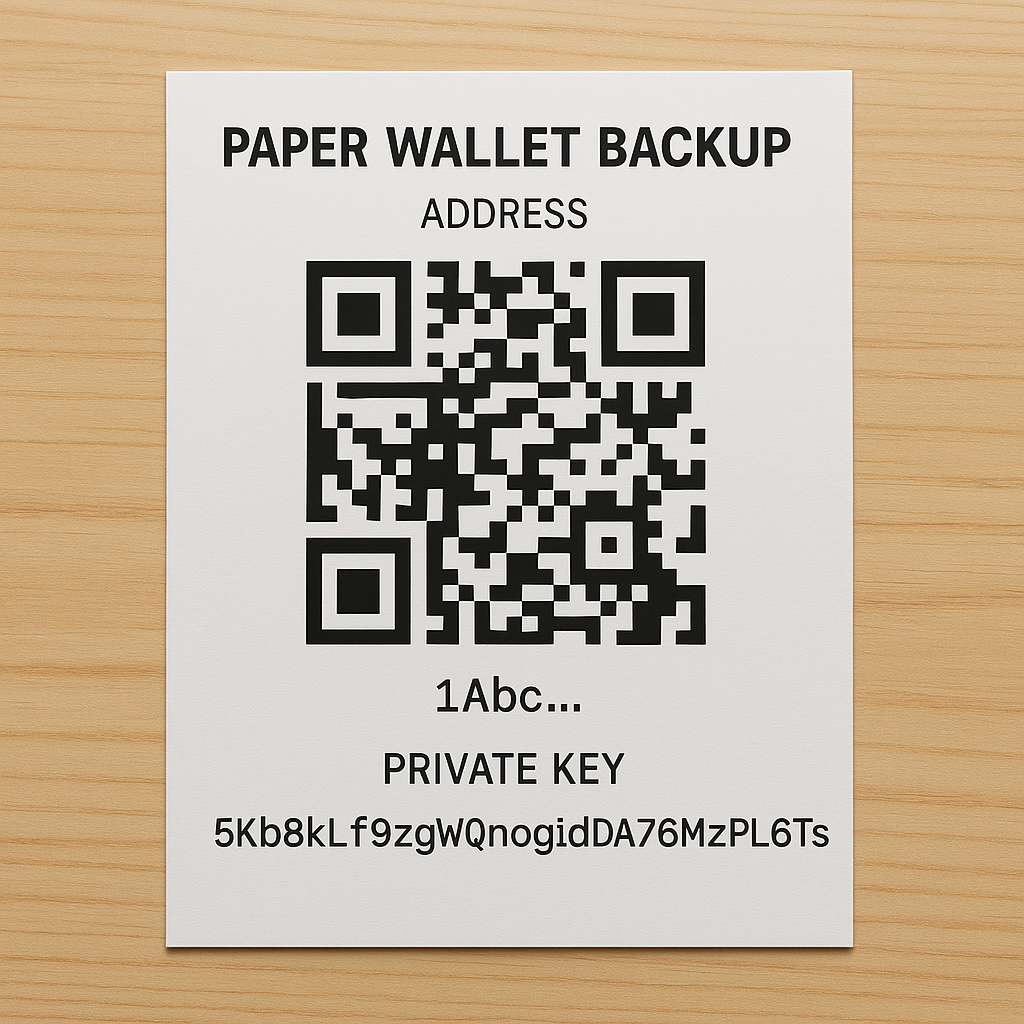
Scanning or photographing the sheet risks leaving digital fingerprints, so skip those steps entirely. For extra caution, slip the paper into a tamper-evident envelope that shows if someone has messed with it.
Paper fades and tears, so check the ink every few months and make fresh copies stored in different spots in case one gets ruined. The method is cheap and low-tech, but baby it or lose access forever.
Paper Wallet Backup
- Completely Offline: A printed QR code means hackers online can’t see a thing.
- Low Cost: All you need is scrap paper and a cheap printer, so anyone can do it.
- Physical Security: A bank safe or locked drawer keeps the sheet from wandering off.
- Tamper-Evident: Seal the page, and you’ll notice if somebody tried to peek.
- Redundancy: Print extras and stash them in different states or countries for peace of mind.
3. Seed Phrase Backup
Your seed phrase-a string of 12 to 24 ordinary words-is the secret doorway back into your crypto wallet. One slip, and the door slams shut for good. Write those words on thick paper or engrave them onto metal so fire and water cant nibble away at them.
Hide the backing under lock and key-inside a safe, or even in a banks vault if you want extra peace of mind. Whatever you do, never fling those words into email or cloud storage. A hacker only needs one quick glance.

For extra wiggle-room, chop the phrase into fragments using tricks like Shamir Secret Sharing, then stow each piece in a different spot. Sharing the passphrase is like giving someone the keys to your house.
Check the words every few months to make sure the ink or metal is still readable. Slip those words into tamper-proof sleeves so youll spot any funny business right away. Making recovery possible is the name of the game.
Seed Phrase Backup
- Universal Recovery: That 12- to 24-word line works with nearly any wallet brand.
- Compact Storage: Scribble it on a kitchen magnet, and it barely takes up space.
- Offline Security: Long as you keep the phrase out of email, snoops can’t touch it.
- Splitting Option: Trick it out using Shamir Secret Sharing so no single slip can drain your coins.
- Durability: Write on metal for flood-proofing or laminate paper for sheer toughness.
4. Encrypted USB Drive
If you like the digital route, an encrypted USB drive is your best buddy. Pick a model that does hardware encryption-something with AES-256 stamped on it-and lock it with a wickedly long passphrase. Fire up an offline computer-no Wi-Fi, no Bluetooth-and paste the seed phrase or private key onto the flash stick.
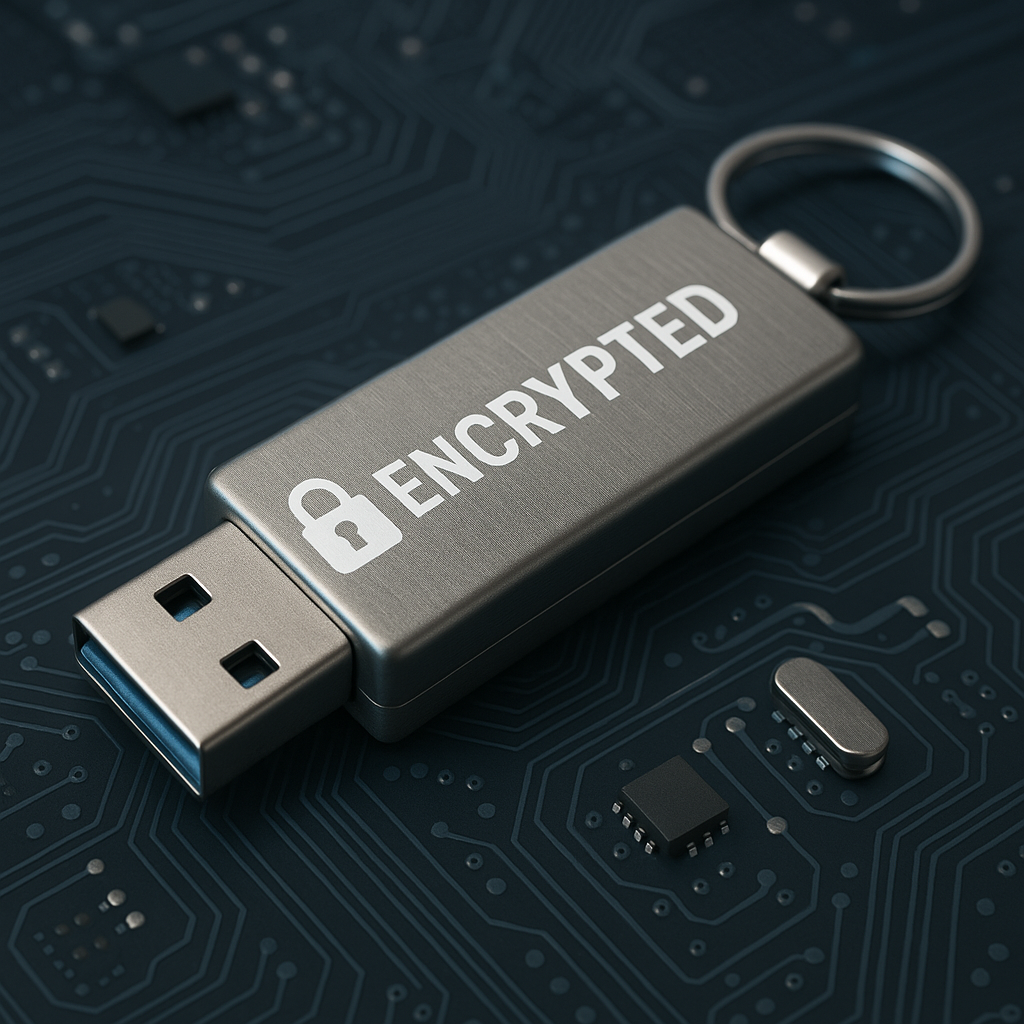
Store the drive in a fireproof safe, or rent a safety-deposit box if youre feeling cautious. Clone the encrypted file and drop copies in two or three different locations so a single disaster wont sink you. Every couple of months, plug the drive into that same offline computer and check for file corruption.
Update your encryption software when it nudges you; out-of-date code is an easy target. The golden rule, though, is simple: never plug the USB into anything connected to the internet. That tiny habit keeps your keys safely behind a digital moat.
Encrypted USB Drive
- Mini Vault AES-256 locks the data like a bank vault with a code you control.
- Unplugged Safety Yank the stick from the port, and digital pickpockets are frozen in place.
- Drag-and-Drop Calm Move keys onto the disk, hit encrypt, and let paranoia relax for a moment.
- Multiple Formats Fill the drive with password-managers, tax docs, or a mixtape-no one needs to know what’s really inside.
- Disaster Proofing Toss an extra, unopened stick into your car glovebox, and you get roadside recovery.
5. Encrypted Cloud Storage
Uploading files to the cloud is easy, but hackers love it just as much as we do. Before you hit that upload button, lock your wallet data away with AES-256 or a tool such as VeraCrypt. Pick a cloud company that offers end-to-end encryption and clearly explains its security rules.
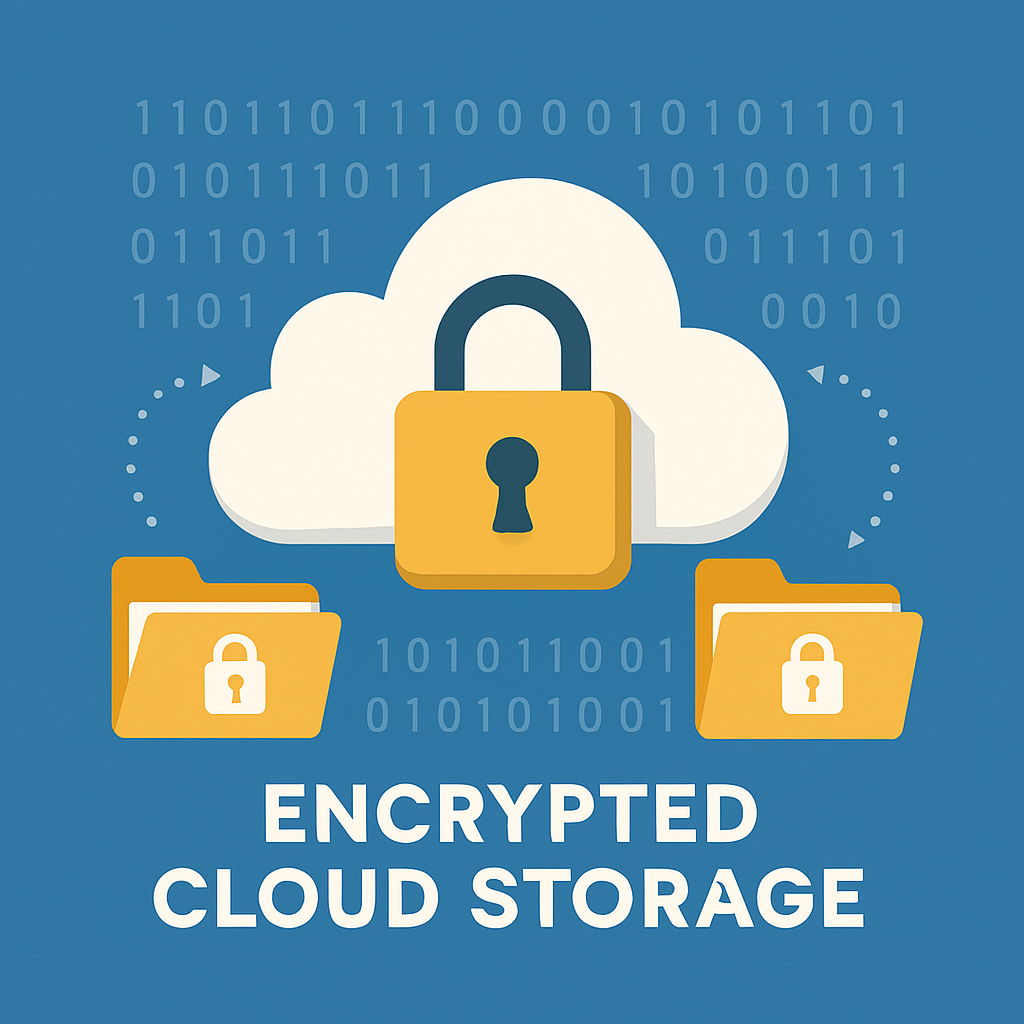
A long, tricky password plus two-factor authentication can close a lot of doors. Never store a plain seed phrase in the cloud, not even for a second. Keep an eye on your account activity, change passwords on a regular schedule, and watch for anything weird.
If you really want to be careful, split your encrypted files into chunks and use two different providers. Even then, remember that saving anything offline is still the gold standard. Treat the cloud as a backup, not your main vault.
6. Multi-signature Wallets
A multi-signature wallet will not send a single coin until several keys say yes, and that slows down thieves for sure. Store each key or seed phrase in its own safe spot-paper backups in a fire-proof box, metal plates at a friends house, or a hardware wallet in a bank vault.
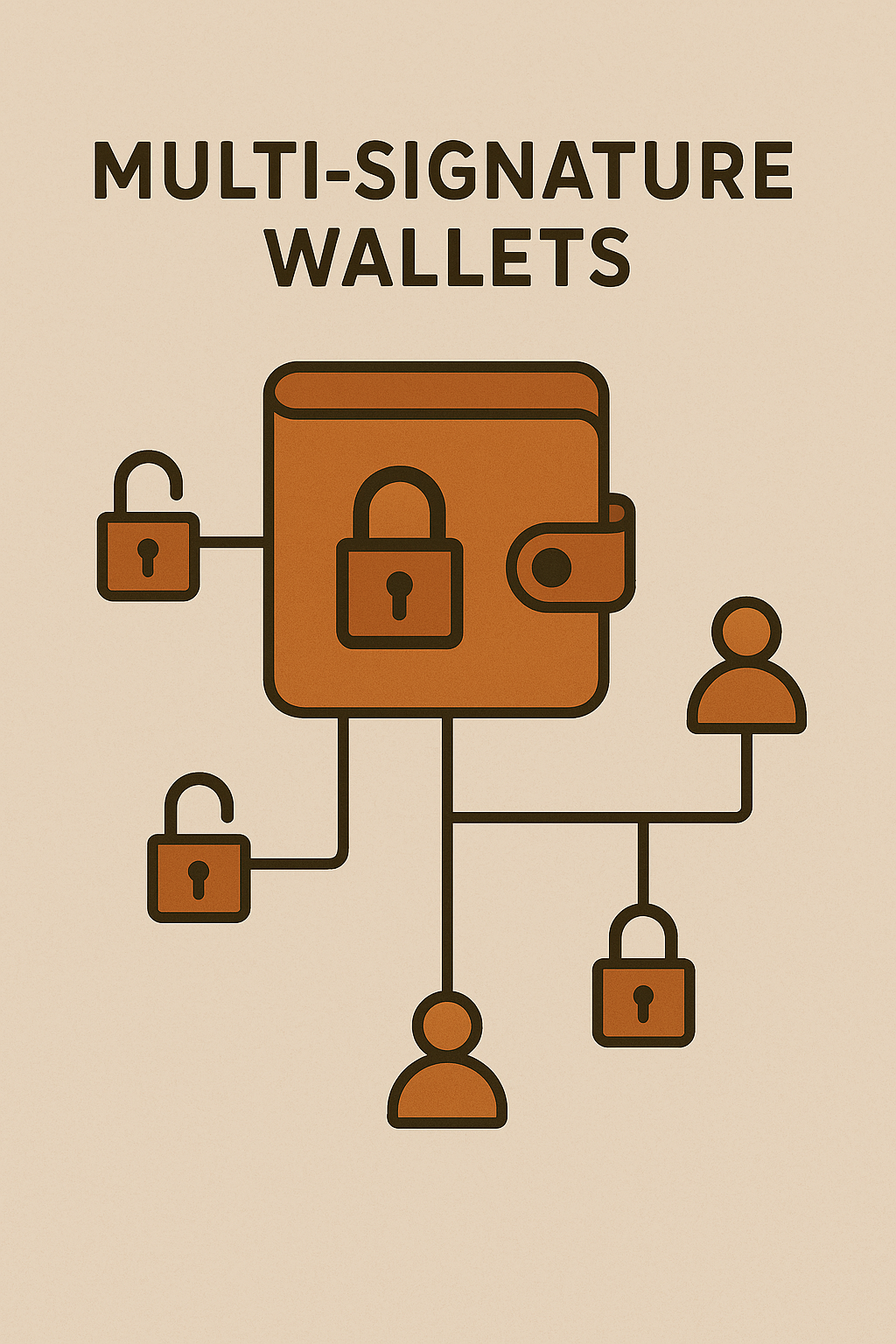
The trick is to make sure no one breathes hard on all the keys at once, so spread them out carefully. Test every location once in a while to confirm you can get to the key, and walk your co-signers through the recovery steps so they know what to do if panic strikes.
Yes, managing extra keys can feel like herding cats, but the headache beats losing everything to a single hack. If your wallet holds serious cash, that extra hassle is worth the peace of mind.
Multi-Signature Wallets
- Several Keys: Moves funds only when several private keys agree.
- Keys Apart: Stashes keys in different spots to dodge a single break-in.
- Tougher Theft: Bad actors must bust multiple locks, not just one.
- Custom Setup: Options range from a 2-of-3 plan to anything you design.
- Co-Signer Trust: Friends or partners must okay each transfer, adding eyes.
7. Shamir Secret Sharing
Think of Shamir Secret Sharing as slicing up your password cake into tiny bites. You make a handful of pieces, or shares, and only a few of them are needed to bake the cake back together. Imagine making five slices but claiming only three will do to haul your wallet back out of the freezer.

Each wedge gets stashed in its own hiding spot-paper, metal, maybe under a loose floorboard. Slide them into tamper-proof bags so anyone trying to peek leaves a mark you cant miss. Because the shares live apart, losing one wont ruin the entire feast.
Once in a while, check that the paper hasn t crumbled and remind a trusted friend how to mix the crumbs without spilling the whole recipe.
Shamir Secret Sharing
- Seed Split: Breaks the seed phrase into tiny, useless shards.
- Pick A Few: Gather only a chosen number to stitch the phrase back.
- Scattered Shares: Hides pieces at different, safe addresses.
- Lose Some: Misplacing several parts still keeps the rest secure.
- Tamper Alert: Each shard has a tell-tale mark if pried open.
8. Metal Backup Plates
A metal backup plate is like writing your fortune on a silver coin instead of a paper napkin. Stainless steel or tough titanium laughs at fire, water, and those kitchen magnets you swear wont budge on the fridge.
You carve the recovery phrase with a handheld engraver, so no Bluetooth snoops hear the letters beep. After the inky burn of the engraving cools, slide the plate into a fireproof box that seals tougher than a soup can.
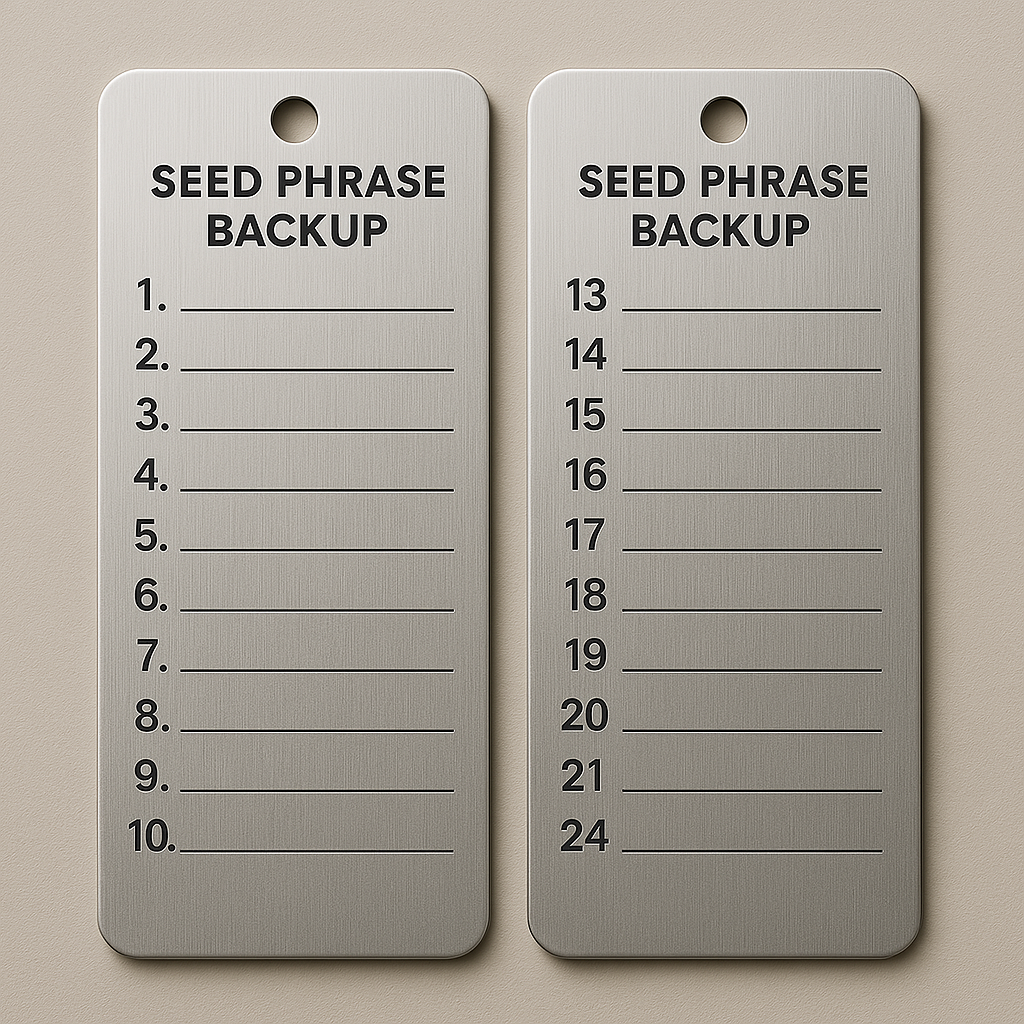
One copy is nice, but two plates in different states is smarter than a single umbrella on a rainy day. Every few months, peek at the words to see if they re still crisp; scratches can hide letters, and letters hide secrets.
Never snap a photo of the finished piece because today s shutter might be tomorrow s hacker. Metal plates outlive phishing emails, spilled coffee, and even that surprise cat camp-out during the fire drill.
Metal Backup Plates
- For Fire and Water: Seed info survives flames and floods.
- Permanent Marks: Letters are stamped, so they won’t smudge.
- Pocket Safe Size: Fits neatly alongside your passport.
- Make Extras: Craft a spare, just in case the first one walks.
- No Wi-Fi, No Worry: Metal stays offline, far from hackers.
9. Cold Storage Vaults
Cold-storage-vaults feel a bit like something out of a spy movie. The places are tucked away, never touching Wi-Fi, and they keep crypto backups safe for banks or billionaires. Providers stack on military-grade tricks: biometric locks, a wall of cameras, and concrete isolation so no one sneaks in.

Some users slide seed phrases or even entire hardware wallets into tamper-proof boxes before handing the stash over. You still need to trust the operator, though, so check their reputation and hunt down any insurance documentation.
Routine audits of access logs and quick checks of your backups keep surprises at bay. Yes, renting this kind of fortress can be pricey, yet it beats worrying about fires, floods, or a clever hacker. For everyday savers, a heavy-duty home safe can do a decent job on a smaller scale.
Cold Storage Vaults
- Fortress Access: Uses fingerprints and cameras to let people in.
- Insured Trust: Big-name firms guarantee what they hold.
- Seal of Safety: Cases lock down tight against tampering.
- Element Proof: Stands strong against rain, fire, and thieves.
- Log Every Touch: Keeps a record each time someone opens it.
10. Secure Offline Computer Backup
Picture a laptop that whispers, I don’t want to meet the internet today. That is an air-gapped computer, a device dedicated only to managing crypto wallets and nothing else. First, wipe the hard drive, toss on a fresh operating system, then install only the wallet software you plan to use.
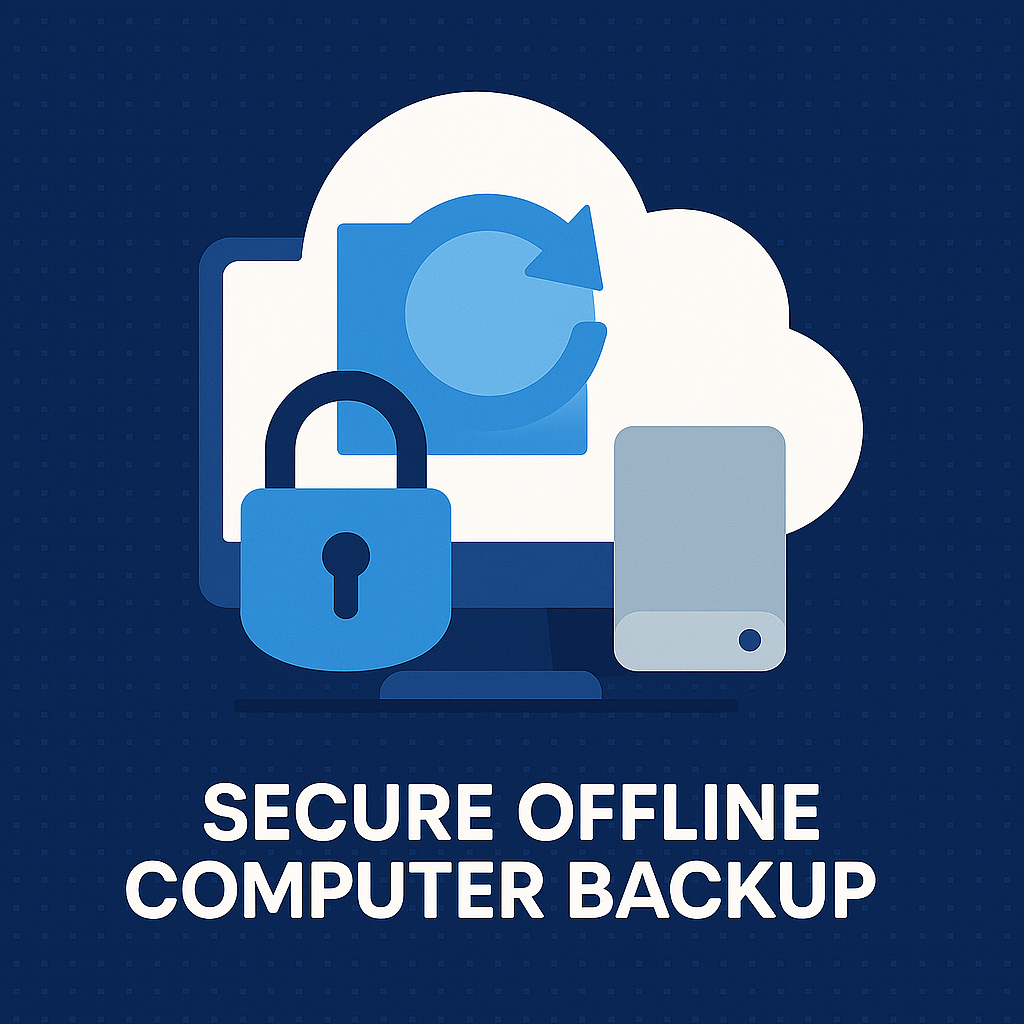
Seed phrases and private keys live on the machine, but backups roam off to an encrypted USB stick or external drive. Lock the computer in a safe when you finish, and for extra caution, wrap the USB with its own password and encryption.
Updates happen the old-school way: ferry new installers in on flash drives that you scan for malware. Although this method blocks hackers, it demands some tech smarts and careful guarding to stop a nosy friend from getting close.
Secure Offline Computer Backup
- Air-Gapped: No cables or signals-ever, always cut off from web.
- Single Purpose: This laptop only tracks coins, nothing else.
- Locked Data: Files are scrambled with tough encryption keys.
Conclusion
Securing cryptocurrency wallets through robust backup methods is essential to protect digital assets from theft, loss, or damage. Options like hardware wallets, paper wallets, and seed phrase backups offer offline security, while encrypted USB drives and cloud storage provide digital convenience with strong encryption.
Multi-signature wallets and Shamir Secret Sharing enhance protection through distributed control, and metal backup plates ensure durability. Cold storage vaults and offline computers offer high-security solutions for substantial holdings.
By combining these methods, such as storing seed phrases on metal plates in vaults, users can achieve layered security, ensuring both accessibility and safety of their cryptocurrency investments.


